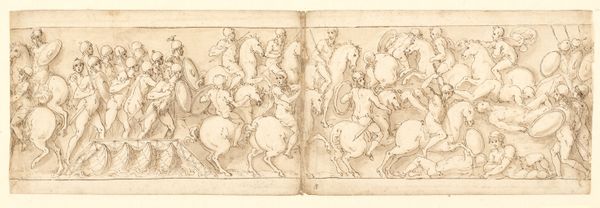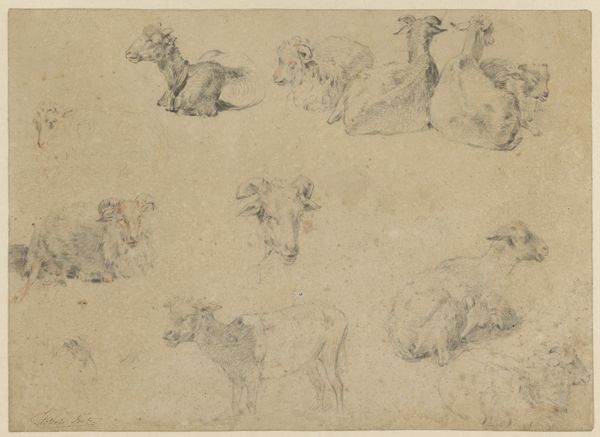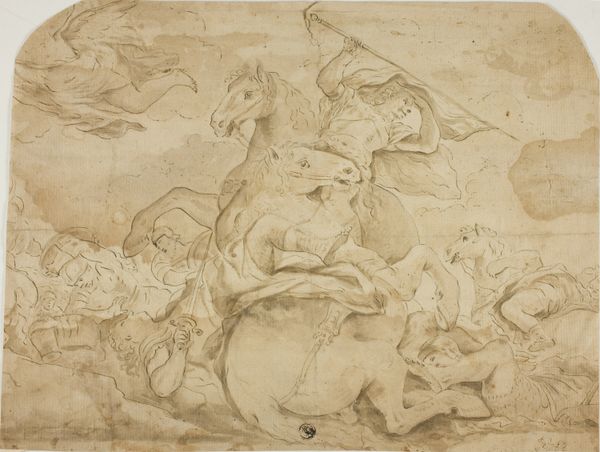
Roman archers(?), Roman assault (XCIX); Marcus Aurelius addressing his guards (C); Marcus Aurelius receives a warning (CI) 1544 - 1618
0:00
0:00
drawing, pencil
#
drawing
#
narrative-art
#
figuration
#
11_renaissance
#
pencil
#
history-painting
#
academic-art
#
italian-renaissance
Dimensions: 133 mm (height) x 432 mm (width) (bladmaal)
Editor: This is a drawing by Giovanni Guerra from somewhere between 1544 and 1618, called "Roman archers(?), Roman assault (XCIX); Marcus Aurelius addressing his guards (C); Marcus Aurelius receives a warning (CI)." It’s a pretty long title. Looking at the different scenes and the scale, it feels really dynamic, like I'm witnessing moments from a play. What do you see in this work? Curator: What strikes me is how Guerra uses these scenes from Marcus Aurelius’s life not just as historical reenactment but as a mirror reflecting the political anxieties of his own time. The Renaissance was obsessed with classical antiquity, yes, but more than that, they sought justifications and strategies for contemporary power structures. Editor: So, it's less about historical accuracy and more about using history to comment on the present? Curator: Exactly. Think about the visual language here—the emphasis on military prowess, the ruler giving directives—it's all very deliberate. Are we to see Marcus Aurelius as an exemplar of virtue and leadership, or is Guerra hinting at the dangers of unchecked power? Where is the perspective, the intent? Editor: I guess it’s both. He seems to be showing different facets of leadership, both the triumphs and potential pitfalls, perhaps mirroring debates around power and governance in the Renaissance. I hadn’t thought about it in relation to the political climate. Curator: And consider the very act of creating this narrative visually. Who had access to these images? Who were they meant to influence? How does art become a tool for shaping collective memory and legitimizing authority? By focusing on power dynamics we see the visual cues as tools for those in power. Editor: This gives me a completely different way of looking at Renaissance art, less about idealized beauty and more about power, identity, and how art participates in shaping the world around it. Thank you! Curator: Indeed, these works exist within a complex web of historical, social, and political forces, and our role as interpreters is to unpack those layers.
Comments
No comments
Be the first to comment and join the conversation on the ultimate creative platform.













